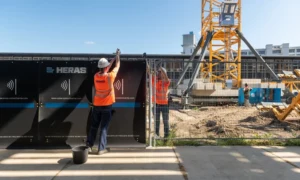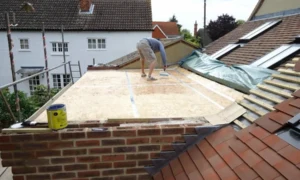In the ever-evolving landscape of sustainable building practices, retro-commissioning has emerged as a pivotal strategy for achieving both LEED (Leadership in Energy and Environmental Design) and Energy Star certifications. With a growing emphasis on energy efficiency, environmental responsibility, and occupant comfort, these certifications have become crucial benchmarks in the construction industry. This article delves into the realm of retro-commissioning and its role in helping buildings attain these esteemed certifications.
Understanding Retro-Commissioning
Retro-commissioning, often referred to as RCx, stands as a beacon of opportunity for existing buildings. Unlike the commissioning process applied to new constructions, retro-commissioning focuses on optimizing the performance of systems and operations within already established structures. Its primary goal is to enhance energy efficiency, occupant comfort, and overall building performance. By identifying inefficiencies and making targeted improvements, retro-commissioning not only reduces energy consumption but also extends equipment lifespan and improves indoor air quality.
The Significance of LEED Certification
LEED certification has become synonymous with sustainable building excellence. With its various levels ranging from Certified to Platinum, LEED serves as a testament to a building’s commitment to environmental responsibility. The certification criteria encompass energy efficiency, water conservation, sustainable materials, and indoor environmental quality, among other factors. A lesser-known aspect of LEED is the importance of building operations in scoring. This is where retro-commissioning steps in.
Retro-commissioning aligns seamlessly with LEED requirements. By enhancing operational efficiency, identifying and rectifying energy wastage, and ensuring optimal indoor environmental quality, retro-commissioning positively impacts LEED scores. Achieving LEED certification involves a holistic approach, and retro-commissioning fits snugly into this approach by addressing key operational components.
Unveiling Energy Star Certification
Energy Star, a government-backed program, focuses solely on energy efficiency. It provides ratings for various types of buildings, such as offices, schools, and retail spaces, based on energy performance metrics and benchmarking. Retro-commissioning plays a pivotal role in the journey toward Energy Star certification by improving energy efficiency and aligning building operations with the stringent standards set by the program.
The alignment between retro-commissioning and Energy Star is evident in their shared focus on energy performance. By identifying and rectifying energy-related deficiencies, retro-commissioning sets the stage for substantial energy savings, making the building a prime candidate for Energy Star recognition.

Synergies Between Retro-Commissioning and Certification Requirements
The parallels between retro-commissioning and certification requirements are striking. Both LEED and Energy Star emphasize the significance of efficient building operations. Retro-commissioning bridges this gap by ensuring that the systems function optimally and that energy wastage is minimized.
Consider a commercial office building seeking LEED certification. Retro-commissioning can lead to adjustments in the building automation system, lighting controls, and HVAC systems, resulting in improved energy performance and indoor air quality. These enhancements align with LEED’s energy efficiency and indoor environmental quality prerequisites.
The Retro-Commissioning Process
At the heart of achieving LEED and Energy Star certifications through retro-commissioning lies a well-structured process. This process involves several key steps that collectively drive improved building performance:
1. Preliminary Assessment and Data Collection: The initial phase involves gathering data about the building’s systems, operations, and energy usage patterns. This baseline information is crucial for identifying areas of improvement.
2. Identification of Deficiencies and Potential Improvements: Through a comprehensive assessment, deficiencies are pinpointed, and potential enhancements are identified. This step serves as the foundation for the retro-commissioning plan.
3. Development of a Comprehensive Retro-Commissioning Plan: Based on the identified deficiencies and improvements, a detailed plan is formulated. This plan outlines the steps to be taken, the systems to be optimized, and the expected outcomes.
4. Implementation of Recommended Enhancements: With the plan in place, targeted improvements are implemented. This can range from recalibrating HVAC systems to upgrading lighting controls for optimal energy usage.
5. Ongoing Monitoring, Verification, and Fine-Tuning: Post-implementation, continuous monitoring ensures that the improvements are yielding the desired results. Fine-tuning is performed to maintain and enhance the building’s operational efficiency over time.
The beauty of the retro-commissioning process lies in its adaptability. It can be tailored to suit the unique needs and requirements of different buildings, ensuring that the improvements are not only effective but also sustainable.

Overcoming Barriers and Challenges
While the benefits of retro-commissioning are clear, challenges and misconceptions still persist. Some stakeholders may express concerns about upfront costs, disruption to building occupants, or uncertainty about outcomes. Addressing these concerns is vital.
Financial incentives, available through government programs and utility companies, can significantly offset the initial costs of retro-commissioning. By highlighting the potential for reduced operational costs and increased occupant satisfaction, stakeholders can be reassured about the long-term benefits.
Integrating Retro-Commissioning into Sustainable Building Strategies
Retro-commissioning is not a one-time endeavor; it is a cornerstone of ongoing sustainable building strategies. After obtaining LEED or Energy Star certification, maintaining the standards and operational efficiency becomes essential. Regular maintenance and periodic recommissioning ensure that the building continues to meet the stringent criteria set by these certifications.
Future Outlook: Emerging Trends
As technology advances, the retro-commissioning landscape is evolving. The integration of advanced technologies, such as the Internet of Things (IoT) and data analytics, is reshaping the way retro-commissioning is approached. Predictive maintenance, facilitated by real-time data analytics, can identify potential system issues before they escalate, resulting in improved operational efficiency and reduced downtime.
These emerging trends are not only revolutionizing retro-commissioning but also reshaping the expectations and requirements for LEED and Energy Star certifications.
Conclusion
Retro-commissioning stands as a bridge between existing buildings and the pursuit of LEED and Energy Star certifications. Its ability to optimize energy efficiency, indoor environmental quality, and overall building performance is invaluable in the context of sustainable building practices. As the construction industry continues to prioritize environmental responsibility and operational efficiency, the role of retro-commissioning in achieving these goals becomes increasingly evident.
In embracing retro-commissioning as an integral part of sustainable building strategies, industry professionals can propel their buildings toward LEED and Energy Star certifications, while also ensuring ongoing performance enhancement and occupant well-being. The marriage of retro-commissioning with certification standards not only benefits individual buildings but also contributes to a more sustainable and energy-efficient built environment.
Elevate your property’s energy efficiency through VertPro Upgrades, where we not only specialize in Commercial Energy Audit and Benchmark Compliance consultancy but also offer the transformative service of Commercial Roofing through our Construction Marketplace.
As the trusted leader in this field, VertPro empowers Building Owners & Property Managers nationwide with innovative SaaS technology-based solutions. From Energy Benchmarking to Energy Audits/RCx Plus, our comprehensive approach ensures adherence to over 50 Energy Benchmarking & Energy Efficiency Laws.
Don’t miss the chance to maximize your energy potential and property value – explore VertPro.com’s integrated solutions today!









































